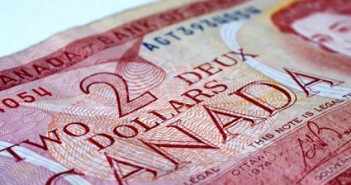The final quarter of 2013 has thus far been a turbulent ride for the Loonie, with a number of compounding macroeconomic factors contributing to its swift decline against its dollar counterpart to the south over the last few months. Sluggish price action from commodities such as copper and oil have acted as a weight on the Loonie, while limited fiscal drag from the government shut-down in the US have market participants warming to the notion there is still a chance the Fed could trim their asset purchase program as early as December of this year.
Along with the external headwinds the Loonie has needed to cope with recently, the most influential driver of price action in the CAD has been monetary policy developments domestically. The persistent slack in the Canadian economy is still evident, with sluggish export growth and subdued levels of business investment making it likely the economy doesn’t return to full production capacity until sometime in late 2015.
While the employment situation and household consumption have both been firm, they have yet to put any upward pressure on prices, causing inflation to come in on the south side of the central bank’s target on a consistent basis.
The absence of export growth and soft inflation has thus prompted the Bank of Canada to not only remove the tightening bias that it had held for so long, but also highlight that the downside risks to inflation are increasing; putting pressure on the Loonie as expectations for the next rate hike from the BoC are pushed further into 2015.
One of the main takeaways from the BoC’s policy meeting today was that the central bank is becoming less worried about imbalances in the housing sector and consumer debt levels, and instead is taking more of an interest in what the perseverance of downward pressure on consumer prices means for the economic recovery.
While we don’t think the Bank of Canada would necessarily entertain a rate cut at this time due to the fact that housing activity and consumer leverage still remain elevated, there is scope for Governor Poloz and Co. to move from a neutral policy stance to outright dovish, should upward pricing pressures in the economy fail to emerge.
A further weakening of the CAD from these levels would allow the BoC more leniency in supporting a balanced recovery, while mitigating against the risk of encouraging bubble-like properties in the housing market that would be associated with an outright rate cut. Taking these domestic developments into consideration, along with the ubiquitous external headwinds of QE tapering from the FOMC and lethargic commodity prices, we have pushed forward the timetable for further CAD weakness, with only minor gains to be made up in the latter half of 2014 when some signs of slack begin dissipate from the economy.
We are now forecasting a slightly weaker CAD into the end of 2013 with further losses to come during Q1 2014 after Yellen and the FOMC look to unwind their asset purchase program. While there is potential to see spikes that drag USDCAD into the 1.09-1.10 region, we feel the opportunities for real money sellers will be fleeting at these levels and ultimately unsustainable, thus holding a YE price target of 1.0700.
Cambridge Mercantile: USDCAD Forecast
| Q4 2013 | Q1 2014 | Q2 2014 | Q3 2014 |
| 1.0700 | 1.0875 | 1.0750 | 1.0500 |
